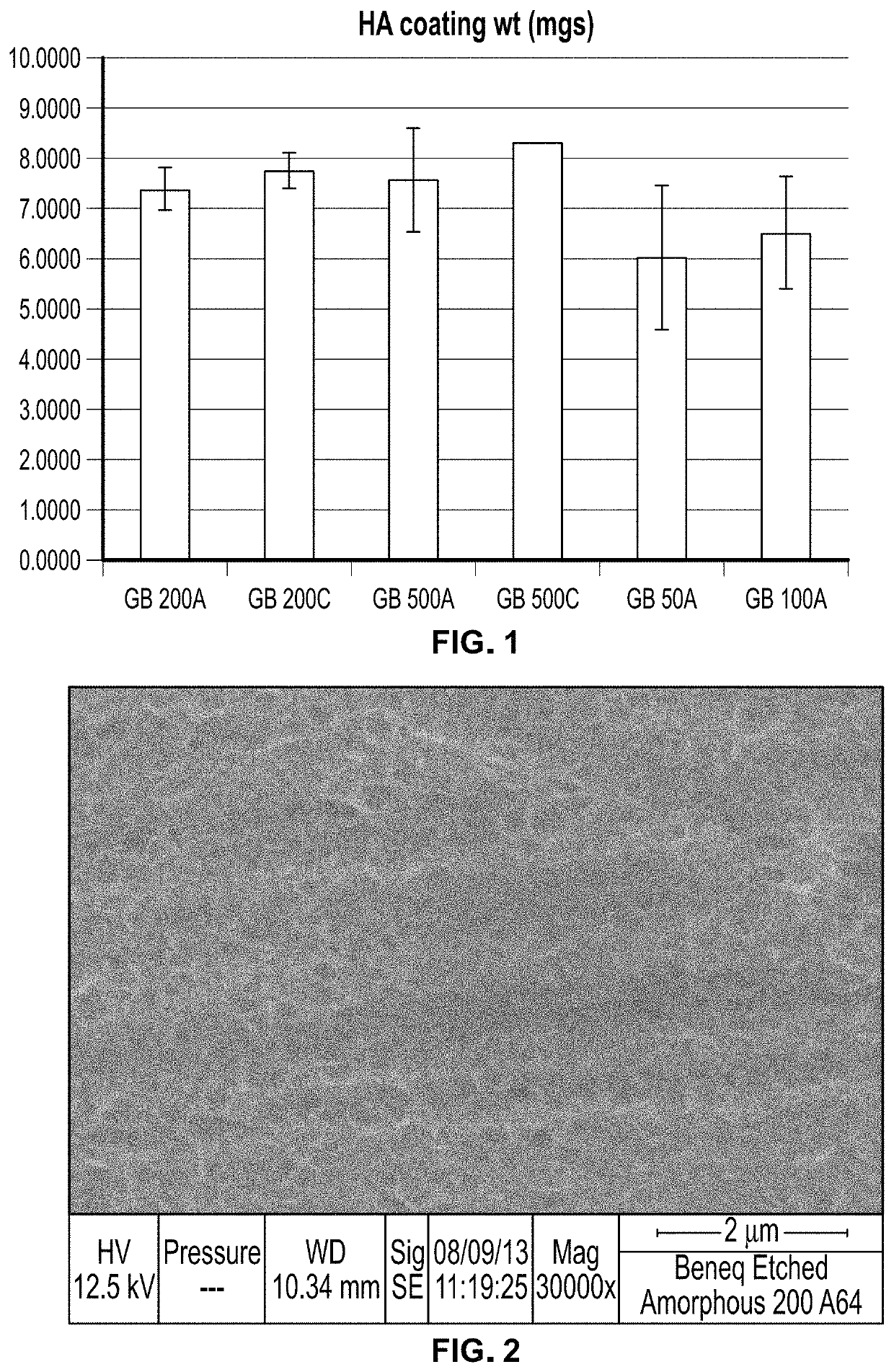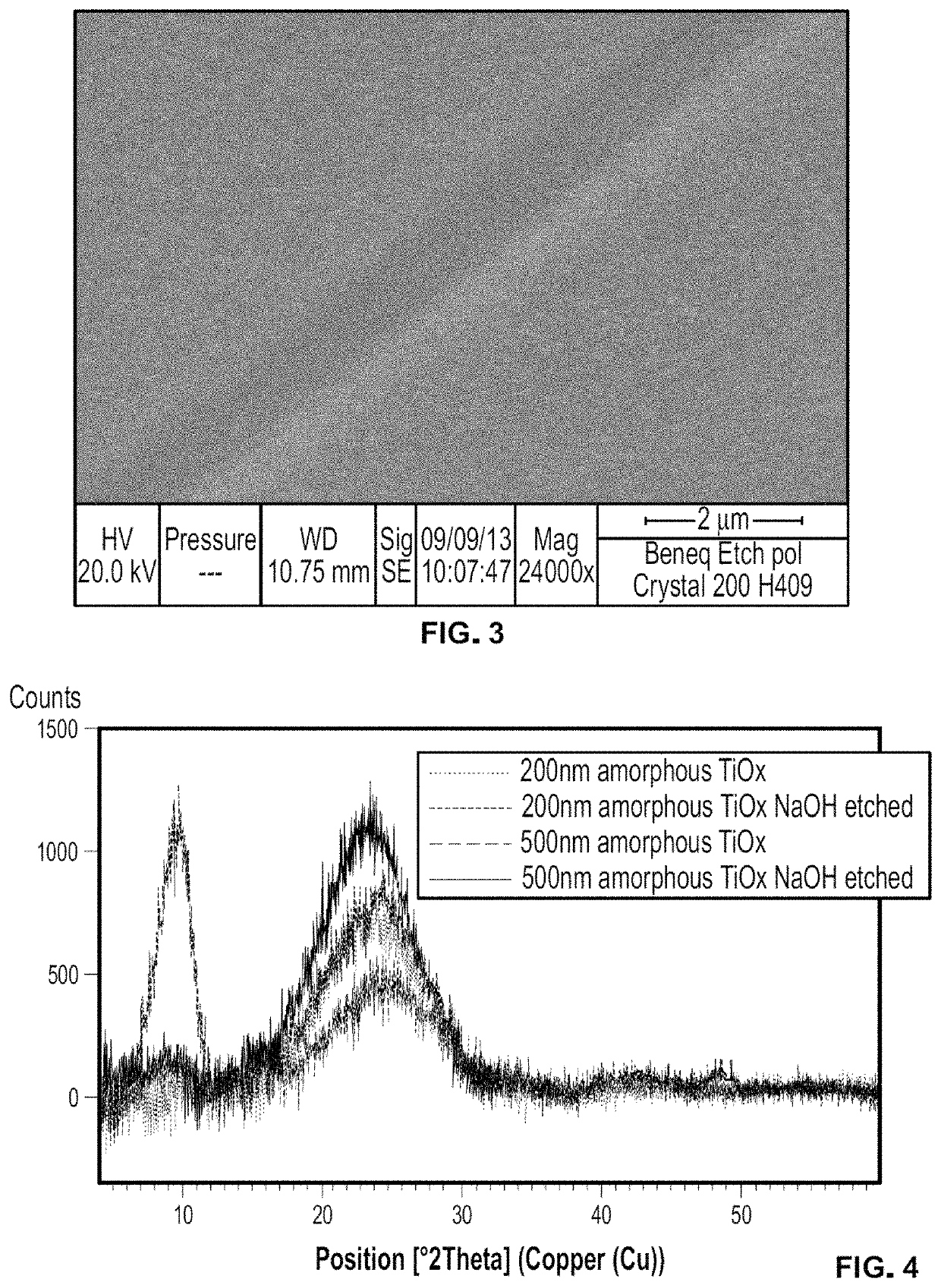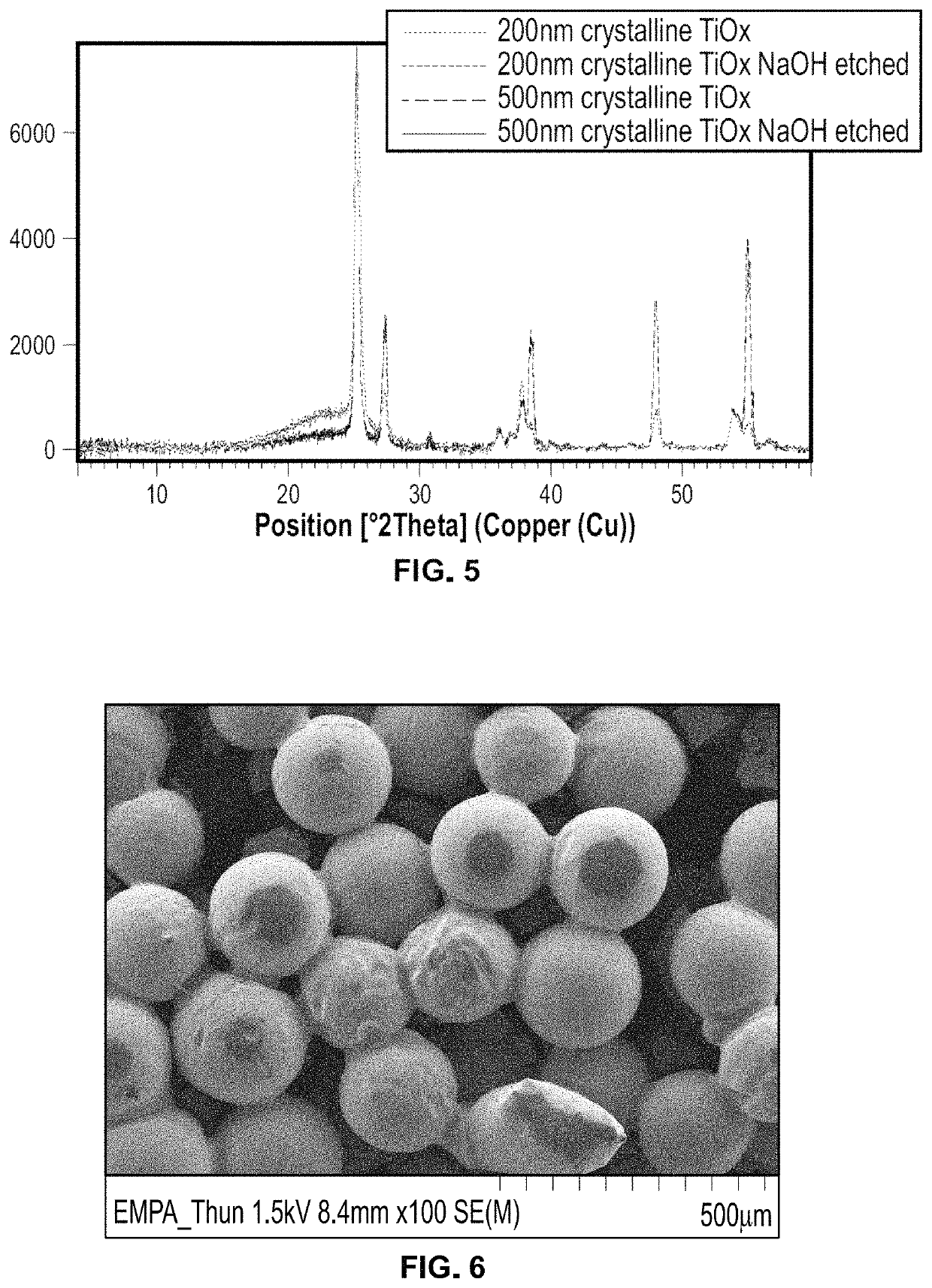Orthopedic implant having a crystalline calcium phosphate coating and methods for making the same
a technology of calcium phosphate and orthopedic implants, which is applied in the field of orthopedic implants having a solution-deposited calcium phosphate coating, can solve the problems of increased wear, inability to uniformly dissolve or degrade psha films in vivo, and inflammatory cascades leading to osteolysis, and achieve the effect of mitigating surface cracks
- Summary
- Abstract
- Description
- Claims
- Application Information
AI Technical Summary
Benefits of technology
Problems solved by technology
Method used
Image
Examples
example 1
Activation of CoCr by Atomic Layer Deposition of TiO2 Films
[0284]TiO2 films were prepared on CoCr grit blast surfaces by Beneq (Helsinki, Finland) by atomic layer deposition. The films were produced from TiCl4 and H2O precursors. Amorphous films were produced at 90° C. and crystalline (Anatase plus Rutile) films were produced at 200° C. Films were activated with hydroxide, according to the methods described in Example 3 (4 hrs, 5M NaOH, 60° C.). 500, 200, 100, and 50 nm amorphous films (500 A, 200 A, 100 A, and 50 A) and 500 and 200 nm crystalline films (500° C., 200° C.) were evaluated for their ability to form hydroxyapatite coatings according to the SoDHA method using nominal concentrations, as further described in Examples 5 and 6.
[0285]HA coating weight for the samples ranged from about 6 mg to about 8 mg, as shown in FIG. 1. Both amorphous and crystalline films were able to nucleate HA after activation by strong base. Coating experiments showed that deposition occurred for as ...
example 2
Electrolytic Formation of TiO2 Films on CoCr Alloy
[0288]An electrolyte solution of 0.05 M TiCl4 and 0.25 M H2O2 in a mixed methanol / water (3 / 1 vol %) solvent was prepared. The pH of the solution was fixed between 0.9 and 1.0. All chemicals were ACS grade. To prepare the electrolyte solution, TiCl4 was slowly added to the solvent, followed by H2O2. During the addition of H2O2, an immediate color change from transparent to dark orange was observed, indicating the formation of a peroxo-complex. Electrolytes were stored at about 4° C. after preparation and pH measurement and, if necessary, pH adjustment. Electrodeposition was performed galvanostatically up to the desired charge density. The temperature was fixed by a cryostat to 0° C. A homemade Labview program (controlling a Xantrex XDC 300-20 power source) was built to control current charge density while recording voltage-time curves. The applied charge density was fixed in the range form 2.5 C / cm2 to 40 C C / cm2. The current density ...
example 3
Titanium Surface Activation
[0290]1 inch diameter Ti6-4 disks coated with DePuy Gription porous metal coating were cleaned and activated by the following steps. Disks were set in a container with reverse osmosis (RO) water and alkaline detergent for 15 min with a sonicator 2 times. Next, disks were set in a container with only RO water for 15 minutes with a sonicator 2 times. 4 disks were placed in a 500 mL beaker and 200 mL of 5M NaOH was added. The disks were placed in secondary containment and a loose cap was set over the top of the beaker. The temperature of the beaker was set to 60° C. and held for 4 hrs. The desks were removed from the beaker and rinsed in RO water in a sonicator for 15 minutes 4 times. Disks were left in a 60° C. oven overnight to dry. No effect of heat treatment of this activation layer on the tendency to promote nucleation and growth of CaP coatings was found in the methods disclosed herein, and examples reported below were performed without heat treatment o...
PUM
| Property | Measurement | Unit |
|---|---|---|
| crystallite size | aaaaa | aaaaa |
| shear strength | aaaaa | aaaaa |
| tensile strength | aaaaa | aaaaa |
Abstract
Description
Claims
Application Information
 Login to View More
Login to View More - R&D
- Intellectual Property
- Life Sciences
- Materials
- Tech Scout
- Unparalleled Data Quality
- Higher Quality Content
- 60% Fewer Hallucinations
Browse by: Latest US Patents, China's latest patents, Technical Efficacy Thesaurus, Application Domain, Technology Topic, Popular Technical Reports.
© 2025 PatSnap. All rights reserved.Legal|Privacy policy|Modern Slavery Act Transparency Statement|Sitemap|About US| Contact US: help@patsnap.com



